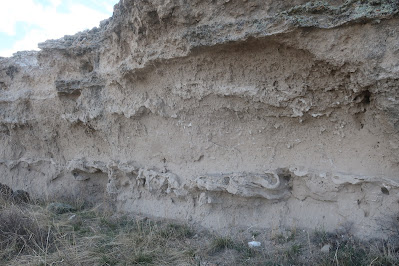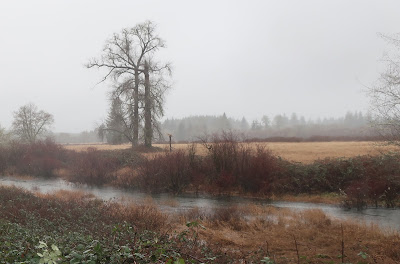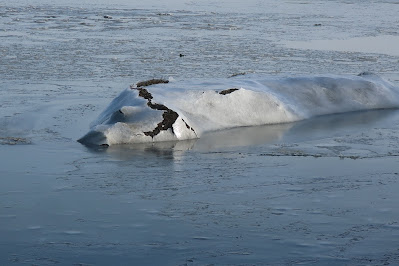I recently had some ventures in the Permian Basin. The Permian Basin looms large in geology lore and American/global policy. The basin extends from southeast New Mexico trough a wide swath of western Texas. The sediments that were deposited in the basin span much of the Cambrian and were capped by a massive carbonate reef building period during the Permian, The long geologic history recorded in the basin rocks and the massive reef building is a subject in many geology text books in a large part because the Permian Basin has garnered a lot of geologic attention - it is the largest oil producing basin in the United States. Hence, the basin subsurface geology has been well explored and there are very good exposures of the basin rocks along the steep slopes of the Guadalupe Mountains on the western edge of the basin where uplift along a steep set of faults provides good cross sectional views of the Capitan Reef.
View of the El Capitan, the Permian Basin and west Texas from Guadalupe Peak
The trail up to the summit of Guadalupe Peak is about a 2,750-foot rocky trail with lots of big steps. It draws an eclectic crowd as it is the highest point in Texas and the hike is hard enough that anyone completing it should feel good about their accomplishment.
I was a bit time constrained starting at around 2 in the afternoon so I really did not have a lot of time to inspect the geology in detail, but did pause on occasion to inspect fossils and noted how much I have forgotten about them and the Permian Capitan Reef.
The oil and gas production in the basin is going through boom period with directional drilling and hydraulic fracturing reinvigorating old fields and opening up new fields. The attractive prices for oil is playing a significant role and investment must be assuming that the price for oil will be worth the expansion in production capacity.
The evidence of the boom is readily apparent out in the high dry plains above the basin sediments.
Drill tower in northwest Texas
I was struck by the response to housing needs in the fields. Perhaps the same logistics regarding housing could be applied elsewhere.
Portable apartment housing for workers in the oil fields
Canopies for shade for workers with campers
Portable hotel
I did not stay at any of the above but did stay at a smaller portable motel. Comfortable bed, a good shower, desk, refrigerator and microwave made for all I needed.
There is subject of some policy debate. The rapid expansion of oil production also produces a lot of methane. While oil is profitable, the natural gas prices are low and therefore flaring, burning off the gas, has increased.
The natural gas production is exceeding the pipeline capacity and some oil producers are opting to flare the gas instead of delaying oil production. This same scenario took place in the ramping up of the Bakken oil 15 years ago. The financial incentives of resource extraction do not always align with limiting wasting resources.
There has been an effort to track the methane emissions (PermianMAPFinalReport.pdf). If you do dig into the details it is interesting to see the range of limiting methane emissions by various companies is broad. Most of the big oil companies do better than the smaller operations, but there is an exception. It is a complex issue scientificamerican.com/MethaneLeak.
The National Park Service does have a nice overview of the Permian Basin geology: nps.gov/GuadalupeountainsGeology.













































